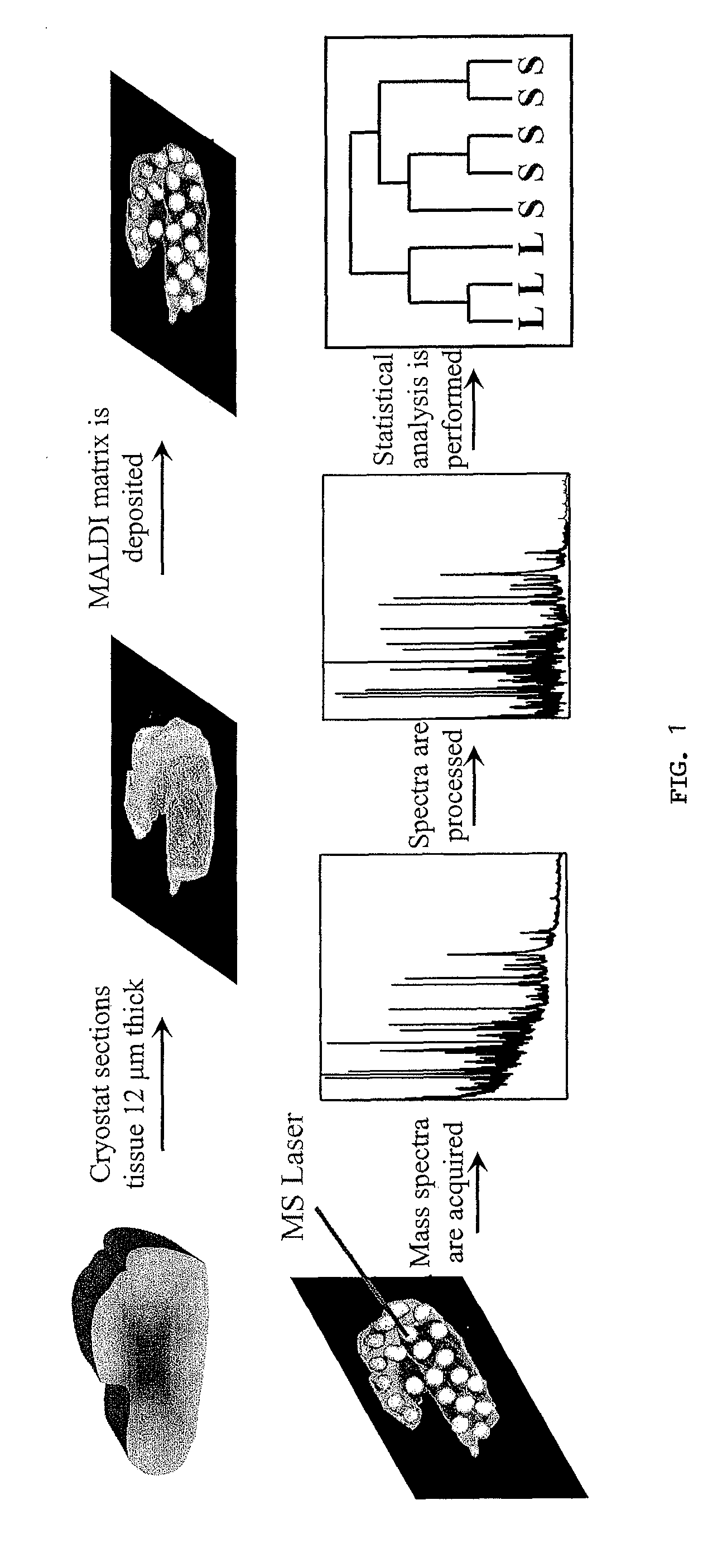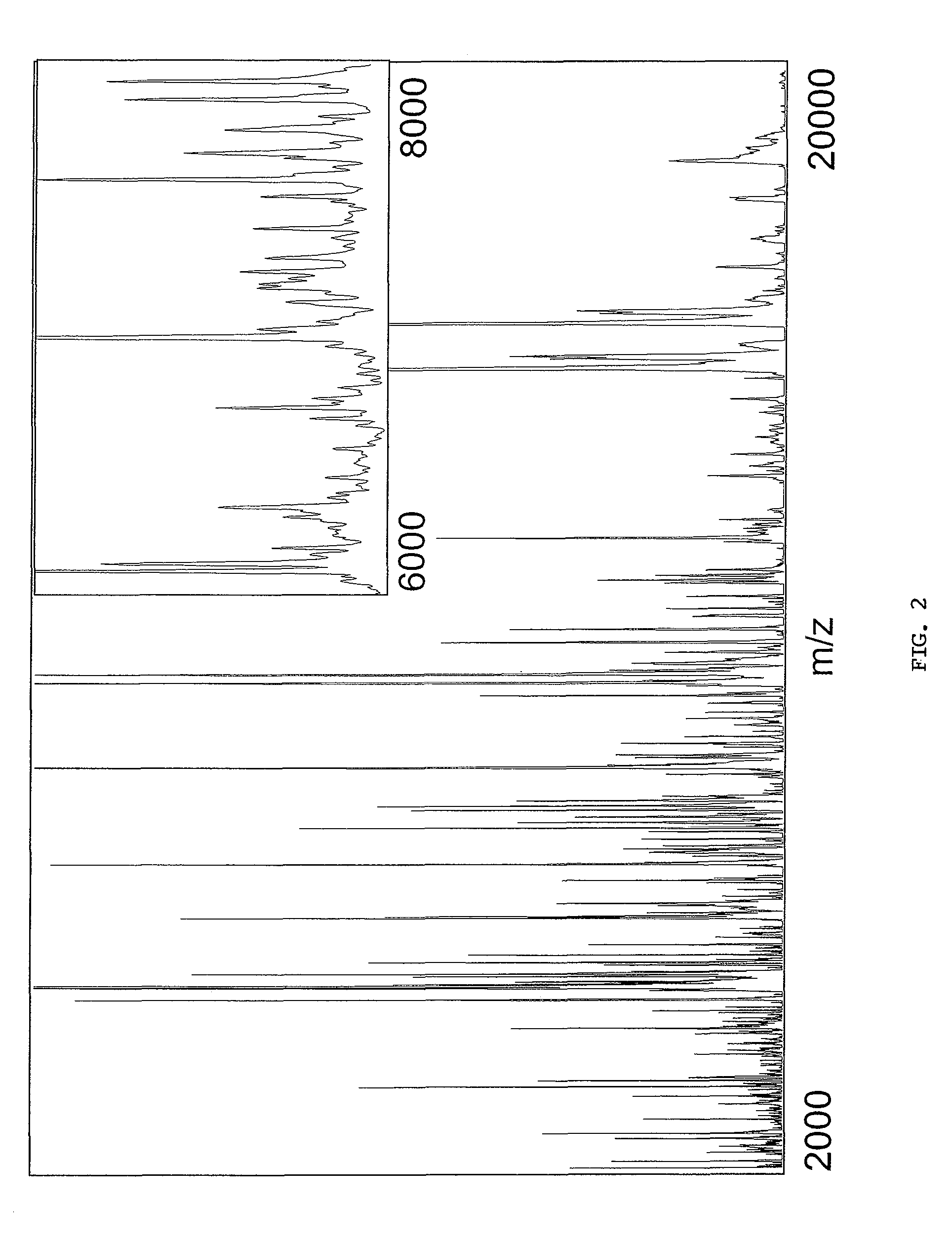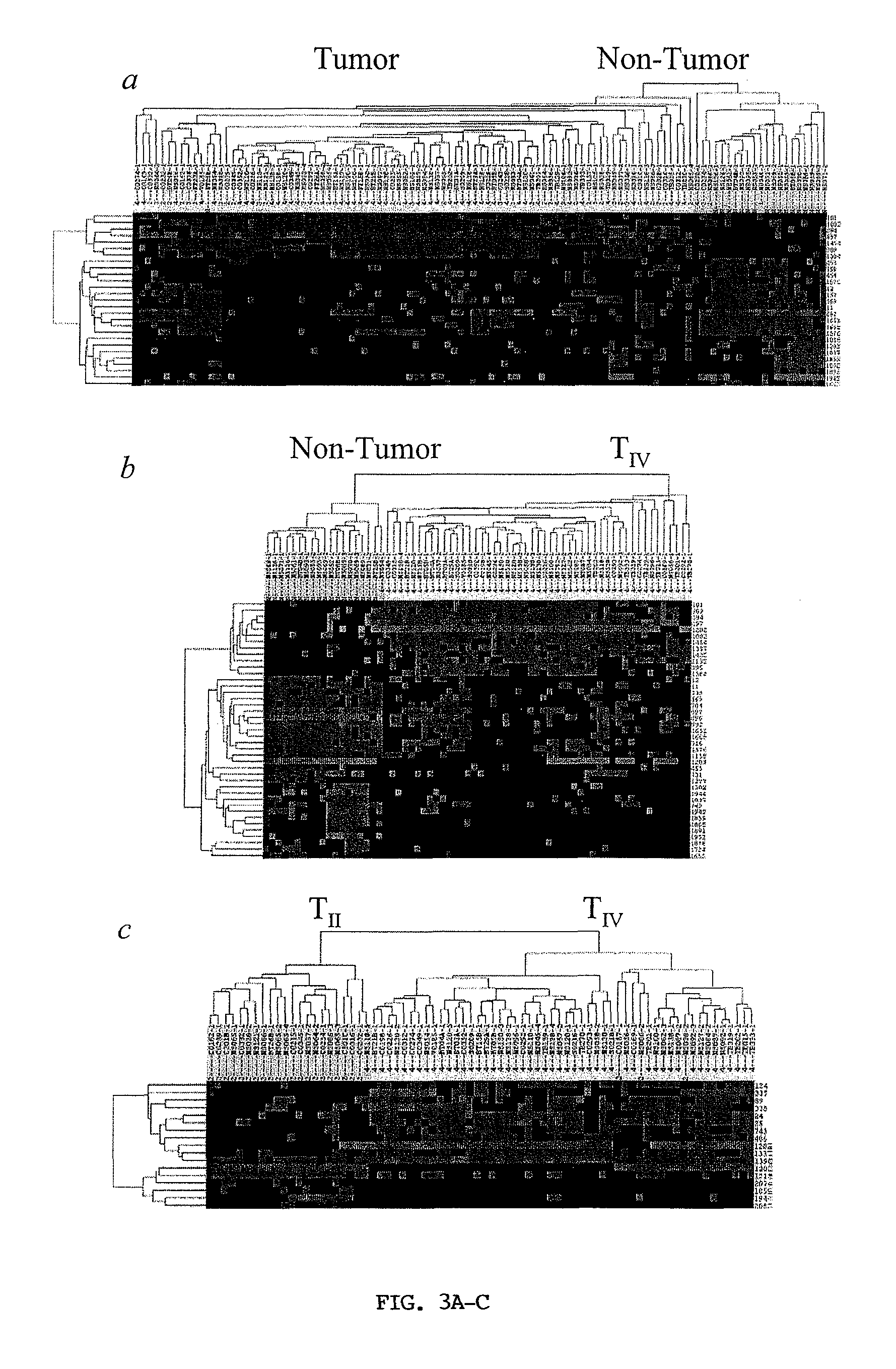Diagnosing and grading gliomas using a proteomics approach
a proteomics and glioma technology, applied in the field of protein biology and oncology, can solve the problems of small sample size, inability to apply the successful application of gene-based classification to glioma, and limited number of human tissues for study, and the cost of such gene expression profiling projects
- Summary
- Abstract
- Description
- Claims
- Application Information
AI Technical Summary
Benefits of technology
Problems solved by technology
Method used
Image
Examples
example 1
Materials and Methods
[0275]Materials. The MALDI matrix compound 3,5-dimethoxy-4-hydroxycinnamic acid (sinapinic acid, SA), hematoxylin, eosin, phenylmethylsulfonyl fluoride (PMSF), sodium chloride and ammonium bicarbonate were purchased from Sigma Chemical Co. (St. Louis, Mo.). Dulbecco's Modified Eagle's Medium (DMEM) was from Life Technologies, Inc. (Rockville, Md.) and fetal bovine serum (FBS) was from Gemini Bio-Products (Woodland, Calif.). T-PER extraction buffer was purchased from Pierce Biotechnology, Inc. (Rockford, Ill.). Sucrose, ammonium acetate and ultrapure Tris were obtained from J. T. Baker (Phillipsburg, N.J.). Sequencing grade trifluoroacetic acid (TFA) was from Burdick and Jackson (Muskegon, Mich.). HPLC grade acetonitrile was purchased from EM Science (Merck, Darmstadt, Germany). Sequencing grade trypsin was from Promega (Madison, Wis.) and Anti-PEA-15 from Santa Cruz Biotechnology, Inc. (Santa Cruz, Calif.).
[0276]Collecting and Processing Clinical Material and Pa...
example 2
Results
[0284]Mass Spectrometric Profiling of Human Brain Tissues. A total of 162 tissue samples from 127 patients (108 glioma and 19 non-tumor patients) were collected and analyzed by mass spectrometry. The general protocol is presented (FIG. 1). Tissue sections were coated with matrix droplets (typically 5-10 droplets were deposited on each section) and each droplet was directly analyzed by MALDI MS; serial sections were collected and stained with hematoxylin and eosin for histopathology. Over 1000 individual mass spectra, representing non-tumor cell populations from non-tumor patients or tumor cell populations from glioma patients, were used for comparative analysis. Between 300 and 500 individual protein signals in the mass / charge (m / z) range of 2,000 to 70,000 were detected; an example of the protein profile complexity, generated by MS analysis of a 12 μm human glioma section, is presented (FIG. 2). The intensity scale was expanded to display low intensity ion signals. The inset...
PUM
| Property | Measurement | Unit |
|---|---|---|
| median time | aaaaa | aaaaa |
| temperatures | aaaaa | aaaaa |
| temperatures | aaaaa | aaaaa |
Abstract
Description
Claims
Application Information
 Login to View More
Login to View More - R&D
- Intellectual Property
- Life Sciences
- Materials
- Tech Scout
- Unparalleled Data Quality
- Higher Quality Content
- 60% Fewer Hallucinations
Browse by: Latest US Patents, China's latest patents, Technical Efficacy Thesaurus, Application Domain, Technology Topic, Popular Technical Reports.
© 2025 PatSnap. All rights reserved.Legal|Privacy policy|Modern Slavery Act Transparency Statement|Sitemap|About US| Contact US: help@patsnap.com



